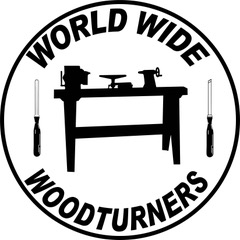… Continued from April 9, 2025
Additional Considerations for Engraving Wood
While the woods listed above provide excellent engraving results, keep these factors in mind to get the best outcome:
- Moisture Content – Always use dry, seasoned wood to prevent uneven burns, excess smoke, or warping.
- Grain Density – Fine-grained woods like maple engrave with more precision and clarity than coarse-grained woods like oak.
- Resin & Oil Content – Some woods, like pine, contain high levels of sap and resin, which can cause uneven burns and sticky residue buildup on the laser lens.
By choosing the right wood and adjusting your laser settings accordingly, you can achieve sharp, detailed, and professional-quality engravings every time.
Woods & Materials to Avoid
While laser engraving opens up a world of creative possibilities, not all materials are safe to use. Some woods and synthetic materials contain chemicals, adhesives, or oils that, when burned, release toxic fumes, corrosive gases, or excessive smoke. These can not only damage your health but also reduce the lifespan of your engraver by contaminating the lens, mirrors, and ventilation system.
Below are the woods and materials you should avoid engraving at all costs:
MDF (MediumDensity Fiberboard) & Plywood – Hidden Toxins in Adhesives: MDF and many types of plywood are made from wood fibers compressed with resins and adhesives, some of which contain formaldehyde and other volatile organic
compounds (VOCs). When burned, these materials produce:
- Thick, sticky smoke that coats the laser lens and reduces engraving efficiency.
- Toxic fumes that can cause respiratory irritation, headaches, and long-term health risks.
- Uneven engraving results due to the different layers of glue and compressed wood.
Alternative: If you must engrave plywood, use laser-safe, formaldehyde-free plywood with minimal adhesives.
Pressure-Treated & Chemically-Treated Wood – Poisonous Fumes: Pressure-treated wood is infused with pesticides, preservatives, and anti-rot chemicals to increase durability for outdoor use. However, burning this wood releases:
- Toxic gases such as arsenic, copper, and chromium compounds.
- Corrosive smoke that can damage both your laser engraver and your lungs.
- Lingering health hazards from inhaling even small amounts of the fumes.
Alternative: Stick to natural, untreated hardwoods like maple, cherry, or walnut.
Oily & Resinous Exotic Woods – Smoke and Toxicity
Risks: Some exotic woods, including cocobolo, rosewood, teak, and ebony, contain natural oils and resins that react unpredictably when burned. These woods are known for:
- Excessive smoke due to high resin content, making engraving difficult to control.
- Toxic fumes—some exotic woods contain natural compounds that can cause allergic reactions or respiratory issues.
- Sticky residue buildup on the laser lens and mirrors, reducing machine efficiency.
Alternative: If you want a dark, richly colored wood, walnut is a great choice, as it provides natural contrast without the excess smoke.
Painted, Stained, or Varnished Wood – Chemical Hazards
Engraving wood that has been painted, stained, or varnished can lead to poor-quality burns and dangerous chemical exposure. Many finishes contain:
- Heavy metals or lead in older paints, which become airborne when burned.
- Polyurethane and lacquer fumes, which are hazardous and corrosive.
- Unpredictable burning patterns, making the engraving look messy or inconsistent.
Alternative: Always engrave raw, unfinished wood. If you want color or protection, engrave first and apply a safe finish afterward.
Plastics & Synthetic Materials – Hidden Dangers
While some plastics are safe for laser cutting (such as cast acrylic), others are extremely dangerous.
Common unsafe plastics include:
- PVC (Polyvinyl Chloride) & Vinyl – Releases chlorine gas, which is corrosive to metal parts and deadly when inhaled.
- ABS (Acrylonitrile Butadiene Styrene) – Produces cyanide gas and sticky soot, making it one of the worst plastics to engrave.
- Fiberglass & Carbon Fiber – Generates fine airborne particles that are harmful to the lungs.
Alternative: If engraving plastic, use cast acrylic (not extruded acrylic) for the best results.
Final Thoughts on Unsafe Materials
Using the wrong materials in your laser engraver can result in toxic fumes, excessive smoke, and even permanent damage to your machine. Always check material safety guidelines before engraving and test new materials in a well-ventilated area.
Stick to natural hardwoods, laser-safe plywood, and safe synthetics to ensure high-quality, clean engravings without the risks.
To be continued in May 14, 2025
